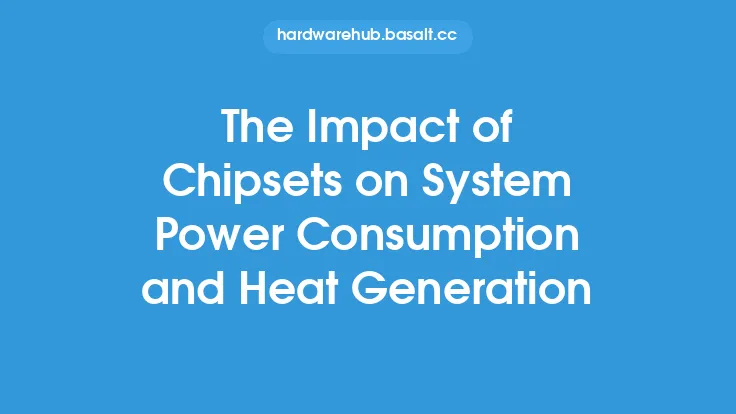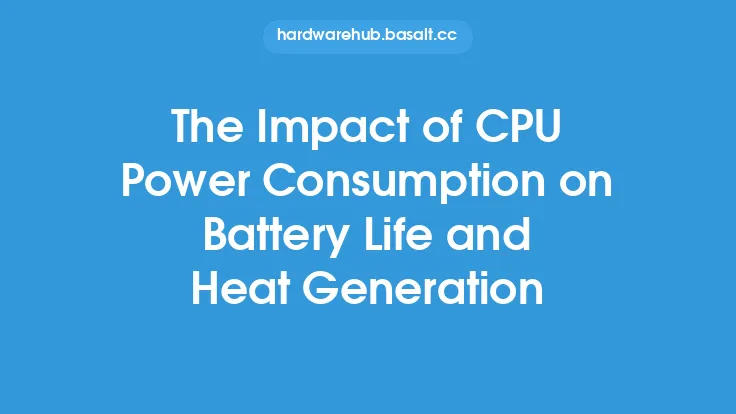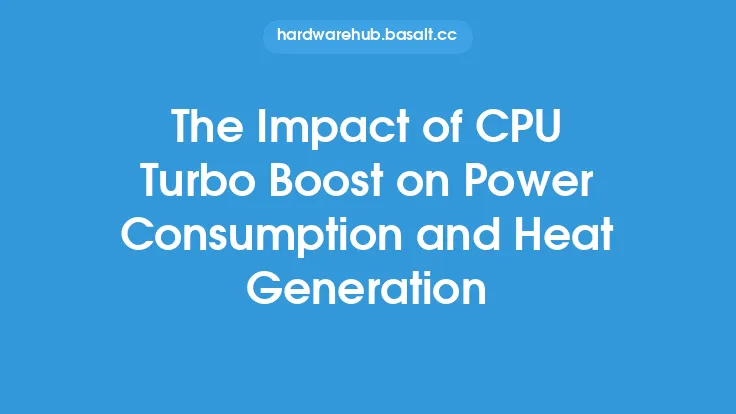The relationship between GPU power consumption and heat generation is a complex and multifaceted one. At its core, a Graphics Processing Unit (GPU) is a powerful electronic component designed to handle the demanding tasks of graphics rendering, compute operations, and other specialized functions. As with any electronic device, the operation of a GPU generates heat, which is a byproduct of the electrical energy it consumes. This heat generation is not just a trivial side effect; it has significant implications for the performance, reliability, and lifespan of the GPU.
Introduction to GPU Architecture
To understand the connection between power consumption and heat generation in GPUs, it's essential to delve into the basics of GPU architecture. A modern GPU consists of several key components, including the graphics processing clusters, memory interfaces, and power management circuits. The graphics processing clusters, which are made up of numerous processing units (such as CUDA cores in NVIDIA GPUs or Stream processors in AMD GPUs), are responsible for executing the bulk of the graphical and computational tasks. These clusters are the primary power consumers and heat generators within the GPU.
Power Consumption and Heat Generation Mechanisms
The power consumption of a GPU is directly related to its heat generation. When a GPU operates, it consumes electrical power, which is converted into heat due to the resistance in the semiconductor materials used in its construction. This heat is generated through various mechanisms, including joule heating (the most significant contributor), which occurs due to the flow of electrical current through the GPU's circuits. Other mechanisms, such as switching losses and leakage currents, also contribute to heat generation but to a lesser extent.
The amount of heat generated by a GPU is directly proportional to its power consumption. Higher power consumption means more electrical energy is being converted into heat, leading to increased temperatures. This relationship is governed by the formula: Heat (Q) = Power (P) * Time (t), where Q is the amount of heat generated, P is the power consumed, and t is the time over which the power is consumed.
Cooling Systems and Thermal Management
Given the significant heat generation associated with GPU operation, effective cooling systems are crucial for maintaining the GPU's performance, reliability, and lifespan. Most modern GPUs are equipped with cooling solutions that can range from simple heat sinks to more complex liquid cooling systems. The primary goal of these cooling systems is to dissipate the heat generated by the GPU to the ambient environment, thereby keeping the GPU's temperature within a safe operating range.
Thermal management is a critical aspect of GPU design and operation. GPU manufacturers often specify a maximum operating temperature for their products, typically around 95°C to 105°C, depending on the model and application. Exceeding these temperatures can lead to throttling, where the GPU reduces its performance to prevent overheating, or in severe cases, permanent damage to the GPU.
Factors Influencing Power Consumption and Heat Generation
Several factors can influence the power consumption and subsequent heat generation of a GPU. These include the GPU's clock speed, voltage, and load. Increasing the clock speed or voltage of a GPU can significantly increase its power consumption and heat generation, as these changes enhance the GPU's performance but at the cost of higher energy consumption.
The type of workload or application running on the GPU also plays a crucial role. For example, graphics-intensive games or professional applications like video editing and 3D modeling can drive the GPU to its highest performance states, leading to increased power consumption and heat generation. In contrast, less demanding tasks like web browsing or office work may keep the GPU in lower power states, reducing heat generation.
Advances in GPU Technology and Efficiency
The GPU industry has seen significant advancements in recent years, with a focus on improving performance while reducing power consumption and heat generation. Technologies like NVIDIA's Ampere and AMD's RDNA architectures have introduced more power-efficient designs, leveraging improvements in semiconductor manufacturing processes, circuit design, and power management techniques.
Additionally, the adoption of newer memory technologies, such as GDDR6X and HBM2, offers higher bandwidth while reducing power consumption per bit transferred. These advancements contribute to more efficient GPUs that can deliver higher performance without a proportional increase in power consumption and heat generation.
Conclusion
The connection between GPU power consumption and heat generation is fundamental to understanding how GPUs operate and how they can be optimized for performance, efficiency, and reliability. By grasping the underlying mechanisms of power consumption and heat generation, as well as the factors that influence these processes, users and manufacturers can make informed decisions about GPU selection, system design, and operational parameters.
As the demand for more powerful and efficient GPUs continues to grow, driven by applications in gaming, professional computing, and emerging fields like artificial intelligence and cryptocurrency mining, the importance of managing power consumption and heat generation will only increase. Ongoing research and development in GPU technology are expected to yield even more efficient and powerful GPUs, further blurring the lines between performance, power consumption, and heat generation.





